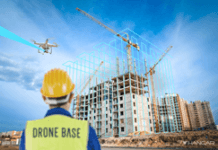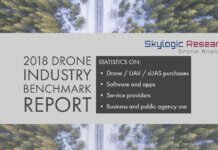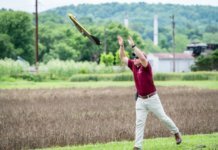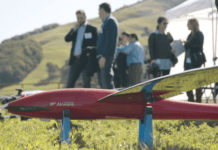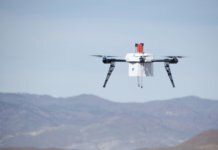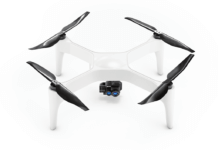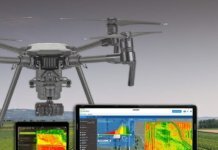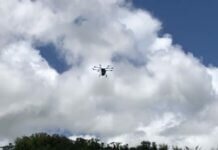Those who work in news and media have a specific set of challenges and concerns when it comes to drones. Let’s take a closer look at a few issues that you might encounter as you use drones to report the news.
Tip #1: Use Side Angles to Get Lateral Shots of Crowds
From marathons to political protests to crime scenes, a drone seems like an ideal tool to capture the size of a crowd and get the widest possible view of how people behave in these settings. However, even the small chance that a drone can fail and fall from the sky means that flying over people – even with their consent – is illegal unless you have a waiver.
According to the Federal Aviation Administration (FAA), organizations that can prove they have implemented sufficient risk-mitigating procedures may be able to obtain a waiver to overfly people. Basically, the FAA wants to see that the people on the ground will be equally safe whether or not you’re flying directly over their heads.
If you want to capture footage of a crowded public area, you will have to submit to the Part 107 waiver process (which can take up to 90 days) or arrange for security to block off any pedestrian areas inside the flight area. Because the waiver process can take so long, it often won’t make sense to request one for gathering breaking news. Planned events, like marathons or rallies, are better candidates for waiver requests.
That being said, it might be wiser to consider alternatives to getting that same shot. Part 107 does not specify a minimum distance, so if you are able to take off and land in an adjacent park or otherwise unpopulated area (so long as it is in otherwise unrestricted airspace), then you won’t have to deal with the waiver process.
Tip #2: Work in Threes
The person in control of your operations is the one who has been issued a Part 107 certificate by the FAA by passing a written test. He holds the responsibility if anything goes wrong, and he should have the final say on whether a flight is safe and legal. No matter how much a manager or producer wants the footage, the pilot has to follow the laws and aviation best practices.
Though it’s not explicitly required in the Part 107 regulations, the University of Nebraska-Lincoln’s Drone Journalism Lab recommends that operators be supported by an observer to ensure that no pedestrians wander into the flight area and to keep the pilot informed of any potential hazards. Additionally, they recommend that a journalist be present to give the operator a sense of what the flight needs to accomplish: i.e., what images should be captured.
Journalists can also function as the observer, but they should be able to separate their desire to direct the flight for information-gathering purposes from their role as a safety worker. They should refrain from speaking to the operator during flight unless it pertains to safety.
Again, it is perfectly legal to fly a drone with only the pilot present, but it can increase the risk of your operations and increase the likelihood of capturing the wrong footage – a major inefficiency. Always remember to check your footage before leaving the site.
Tip #3: Get Permission for Flying Over Private Property
There is a lively debate on this subject, considering new incidents are cropping up regularly. So far, these conflicts between property owners and drone pilots have not centered on newsgathering, but it’s likely a matter of time.
The FAA refers to the National Telecommunications and Information Administration “Voluntary Best Practices for UAS Privacy,” as well as local trespassing ordinances. Part 107 does specify that you cannot directly overfly any person not participating in your operation or endanger people or property on the ground, but it doesn’t stipulate a minimum distance.
In order to avoid any whiff of conflict in the first place – it’s a fact that many people regard drones with suspicion, especially as they are being rapidly introduced as a part of everyday life – you should alert any property owners ahead of time that you will be conducting a flight over their land and obtain their permission. The last thing you want is to be the news organization with its name on a court case. Asking for permission should help avoid legal conflict and damage to your aircraft and hopefully work toward normalizing the use of drones in media.
Different states and municipalities have different laws, and it’s the pilot’s responsibility to know what they are in any given jurisdiction.
Tip #4: Beware When Flying in Major Cities
Despite the fact that New York City and Washington, D.C., are major media hubs, the airspace in these cities is heavily controlled for a variety of reasons, and this is unlikely to change anytime soon.
Protecting the airspace around busy airports and airstrips is one of the main reasons for controlled classes of airspace. Depending on the size of the facility and the number of towers, an airport can carve out a five-mile radius of restricted airspace (though the FAA will be opening up some of that airspace soon). For cities with multiple airports, this can spell headaches when you’re trying to use a drone to film a breaking story. A good practice is to apply for airspace authorization from the FAA for the class of airspace in which you’ll likely need to fly. There’s no guarantee you’ll get it, but the process is simple and straightforward.
This article is adapted from a blog post by Gavin McMinn, a drone ops consultant at Skyward, a Verizon company providing an information management platform for commercial drone operators.


